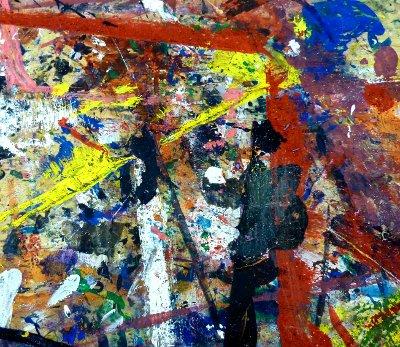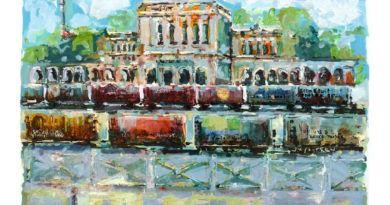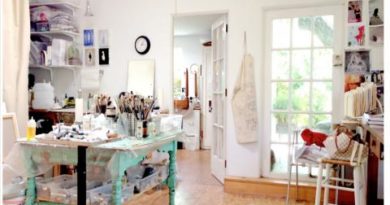THE FINE ART OF MESS MAKING
The image of a messy workbench often comes to mind when people think of an artist’s working space. Perhaps the workbench has a row of old cans filled with brushes and assorted metal objects, some rusted with age. The top of the bench might be covered with years of paint, layered thick as if it were a protective coating, colors creating channels and paths leading off the edge. Could it be that this messy work space is one of the few remaining places where loose and free creativity takes place? True, children still know how to create endlessly in sandboxes, wiping out previous constructions in favor of new dreamscapes. But adults have fewer opportunities for this kind of play. Structure helps us develop skills, speed and security, but when we go to our Jungian therapist, we are likely to work in the “Sand Tray” in search of our lost identity.
In California, corporate executives go to mudbath retreats to loosen up and de-stress. A mudfight is considered optimum. Perhaps art-making is equally beneficial. Making a mess, and then observing how everything comes together in a new never-before-on-earth visual image may be a basic necessity of life. Computers are not very messy, they are binary by design. But the random “stuff” of the artist’s bench has tremendous potential for great messes. Along with the mess comes something new and undiscovered. For some of us it may be the only time we have to just be freely expressive and see what exciting things appear!




